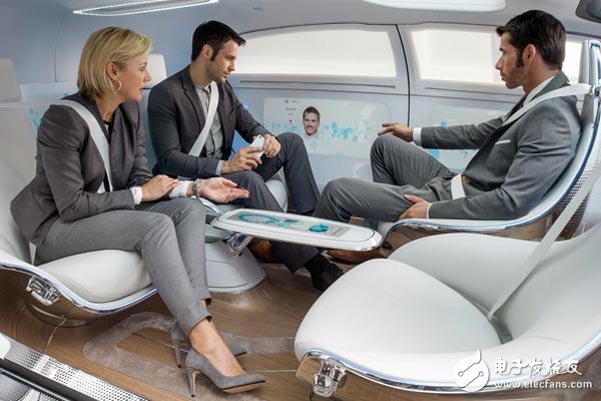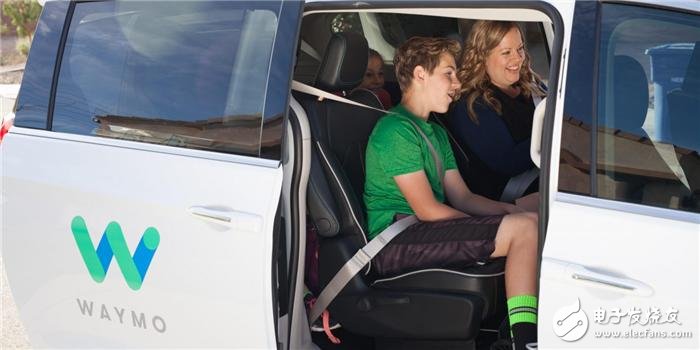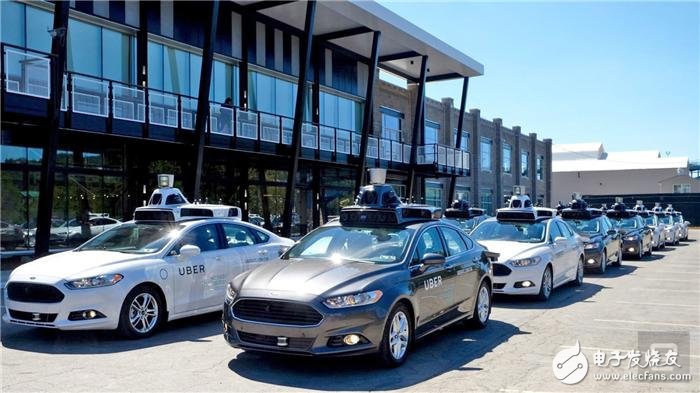On February 15, 2018, Baidu APOLLO self-driving car debuted in the Spring Festival Evening. This self-driving team successfully made a number of complex fleet formations such as straight, formation, and overtaking on the Zhuhai-Hong Kong Bridge. I don't know if it makes you feel shocked? Whether you know or don't understand autonomous cars, the pace of self-driving cars is getting closer. Autonomous vehicles not only provide passengers with a rich ride experience, but also influence every aspect of future life.
But there is a real problem. Can you get motion sickness when you ride a self-driving car? What if I have motion sickness? In fact, many organizations or companies have already begun to pay attention to this issue. Let's take a look at the Geshi Auto Xiaobian!
University of Michigan Transportation Research develops wearable devices to solve motion sickness problems

Motion sickness is caused by the difference between the information felt by the human vestibular system and the information received by the brain, which leads to nausea and even vomiting. The UM-developed system helps to eliminate this information difference by illuminating the passenger's edge vision and mimicking the view of the passenger's eyes from the outside. The system includes wearable devices and in-vehicle devices.
The system's inventors, Michael Sivak and Brandon Schoettle, are working with the University of Michigan Technology Transfer to commercialize the system. Sivak said: "About half of adults read books in cars and occasionally get motion sickness. For autonomous cars, there are more passengers with motion sickness. Because in autonomous cars, everyone is a passenger. If not To solve this problem, passengers will have difficulty enjoying the convenience of self-driving cars."
Keith Hughes, deputy director of UM Technology Transfer, said: "The system has been patented and we will contact the car and component suppliers to commercialize the technology. With the development of autonomous vehicles, the interior of the car needs to be better. For example, a sofa can be placed in the cabin, and the passenger can be moved to the rear seat or the side seat. In short, in order to make the passenger enjoy a better ride experience, it is very necessary to solve the motion sickness problem."
Waymo changes driving style to solve passenger motion sickness

Waymo has developed a sophisticated system that prevents self-driving passengers from motion sickness. The system allows the passenger to choose the right path. For example, for passengers who are relatively sensitive to motion sickness, the system will choose a relatively less congested road for a more comfortable ride. For passengers in a hurry, the system will choose the fastest route, but the trip may be a little hasty.
The system also reminds passengers not to look down at certain times or to read during the trip. For passengers with more serious motion sickness, the system will also recommend sitting in a specific seat to alleviate their symptoms. Waymo will also check the acceleration and shaking of autopilots on certain routes to determine the likelihood of passengers getting motion sickness.
On the road, when the passenger feels uncomfortable, the self-driving car will also change the driving style, including maintaining a larger distance from the vehicle in front, or turning to a relatively less congested road to prevent the car from continuing to stop. To make passengers feel uncomfortable.
Uber solves passenger motion sickness through light, air and vibration seats

Uber is applying for a technology patent to spur the passenger's senses while moving, distracting the brain and solving the passenger's motion sickness problem.
The light bar and screen show the car's driving intentions, reminding the brain to prepare for the upcoming turn and other operations. When the car turns, the seat begins to twist. When the car brakes, the seat begins to vibrate. Even blowing air at passengers at different speeds and directions provides continuous stimulation that diverts the passenger's attention from the sway and bumps of the vehicle.
This is only a patent application and there is no guarantee that this type of technology will be used in robot vehicles in the future. The Guardian said that some technologies are effective and some are not so useful. For example, blowing a passenger may be a good choice, but shaking the seat may not be as effective.
Dc Axial Fan ,12V Axial Fan,Dc Axial Fan 12V,Dc Axial Fan 24V
Hangzhou Jinjiu Electric Appliance Co Ltd. , https://www.jinjiufanmotor.com